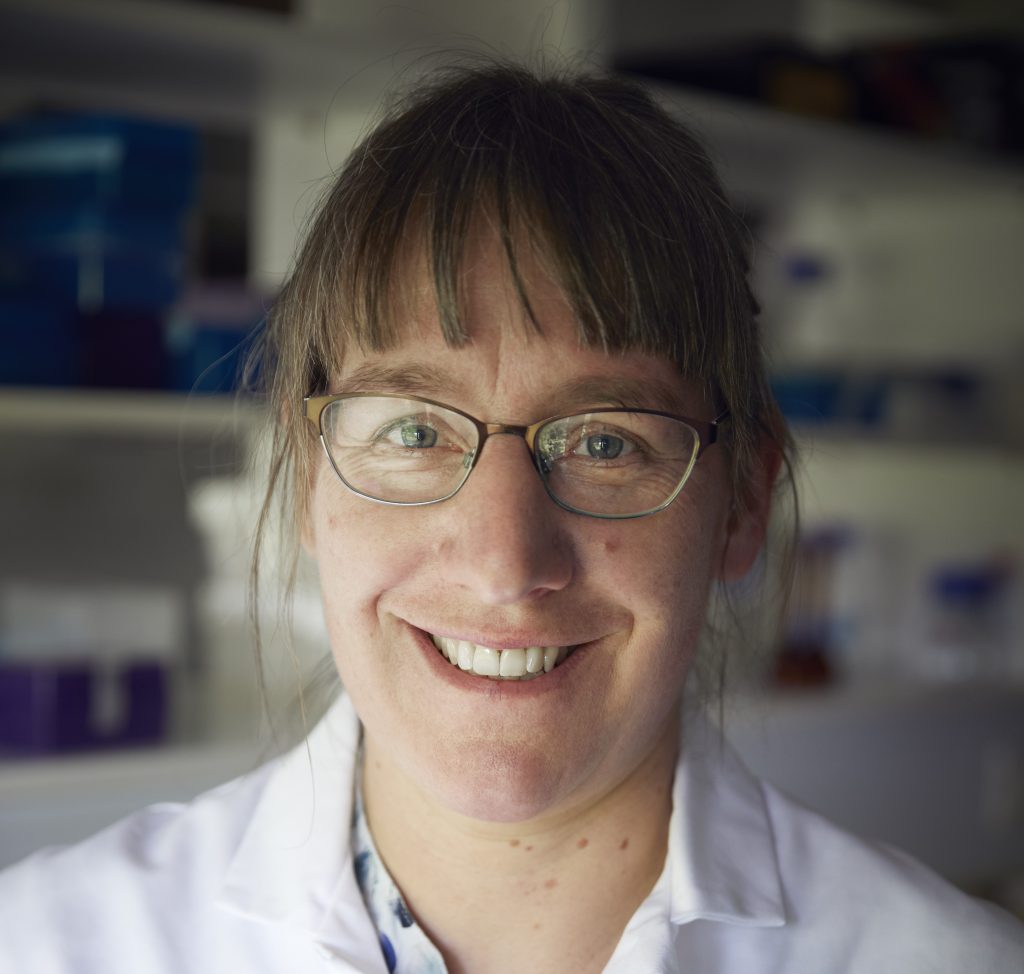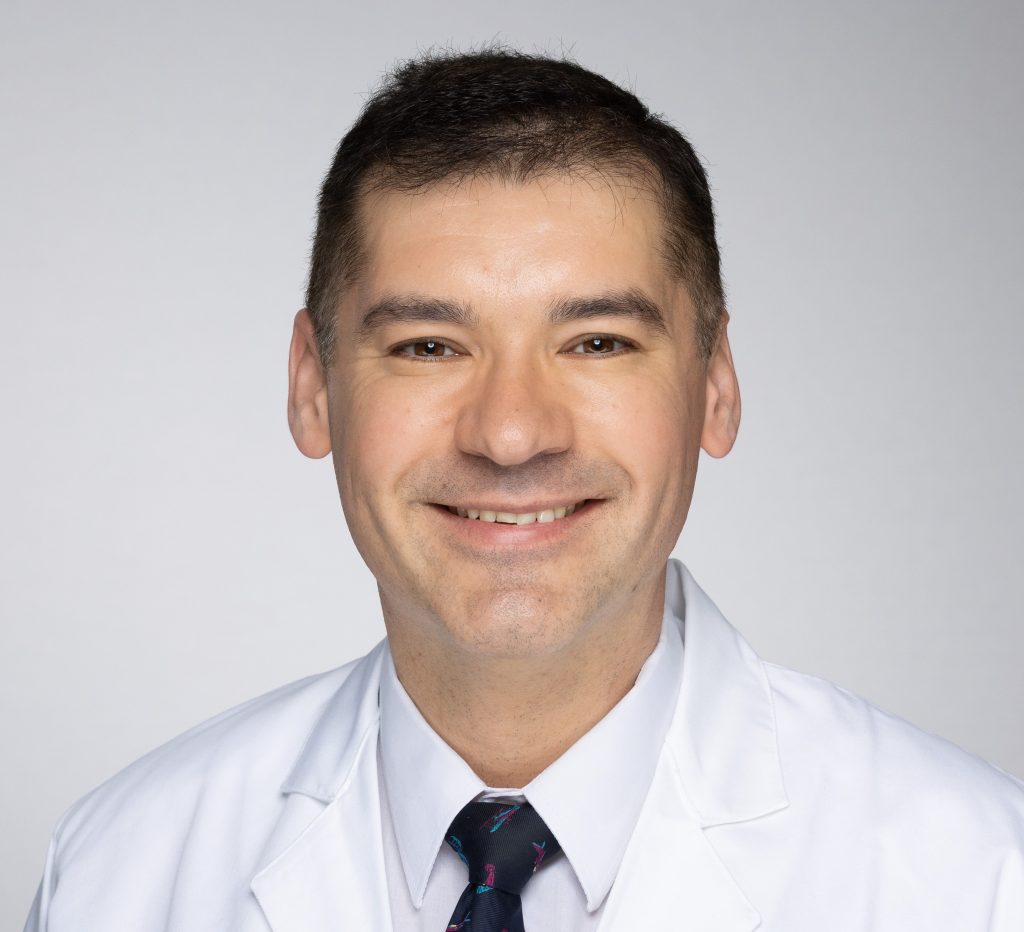13 October 2023
Research elucidating bacteria’s role in atopic dermatitis, investigation into the potential link between gut microbiome composition and vitiligo, and co–creation and implementation of a dermatological care system for one of Canada’s First Nations. This round of research grants in open competition supports 10 new skin research projects.
The LEO Foundation awards over DKK 36 million (EUR 4.9 million) to 10 new and exciting research projects in round two of research grants in open competition 2023. With grantees hailing from Denmark, the US, Canada, the Netherlands, and Norway, these 10 research projects delve into a wide range of research topics – from Lupus, a major autoimmune disease characterized by the immune system’s attack on the body’s tissues and organs, to Dermatitis Herpetiformis, a blistering skin disorder – all contributing to important further investigation, strengthening our understanding of skin and skin diseases.
The LEO Foundation’s open competition research grants are awarded to the best skin research projects worldwide, with an aim of improving our understanding of the skin and its diseases, hoping to provide a boost to research across the globe.
A glance into the projects
One project to receive funding is that of Postdoc Blaine Fritz, from the Costerton Biofilm Centre at the University of Copenhagen, Denmark. His project investigates the ongoing genetic changes and interactions between bacteria and patients’ skin during the development of atopic dermatitis. Atopic dermatitis is a common skin disease – affecting up to 20% of children and 10% of adults – and the ambition of Blaine Fritz’s project is to elucidate bacteria’s role in this disease, potentially guiding antibiotic treatment.
Another funded project is that by Professor Caroline Le Poole, from Feinberg School of Medicine at Northwestern University, USA. Caroline Le Poole will investigate the potential link between the gut microbiome composition and vitiligo – a disorder that causes loss of melanocytes, or pigment-producing cells, which in turn gives rise to the characteristic white patches of skin seen in patients. Research which has been conducted by Caroline Le Poole and her team suggests that specific microbes can influence vitiligo development. The grant will allow further research testing this hypothesis, with an aim to seek therapeutic possibilities – as well as gain important insights into a skin disease with a large unmet need both in terms of research and treatment options.
Associate Professor Ivan Litvinov from McGill University Health Centre, McGill University in Canada is another investigator to receive a grant in this round. The project focuses on eczema and psoriasis, and on co–creating and implementing a culturally sensitive dermatological care system with indigenous partners in the Cree territories in Quebec – one of Canada’s First Nations. Through the project, Ivan Litvinov will collect both qualitative and quantitative data, with a focus placed on meaningful engagement with patients, healthcare providers, and wider communities to establish sustainable dermatological care for the region.
You can read more about all 10 of the research projects below.
Arjan van Laarhoven
PhD, Radboud University Medical Center, Netherlands, DKK 4m

Non-Tuberculous Mycobacterial Skin and Soft Tissue Infections: Using a Site-of-Disease Approach to Understand Pathophysiology and Improve Outcome
Arjan van Laarhoven’s project aims to improve the treatment of patients infected with mycobacteria by looking at the patient’s individual immune responses to the infection and combining this with optimized treatment with antibiotics.
Non-tuberculous mycobacteria (NTM) can cause debilitating skin and soft tissue infections (SSTI). NTM SSTI incidence rises with an aged population and increased use of immunosuppression. These infections require treatment with multiple antibiotics for minimally 4-6 months. Still, non-response or worsening of skin lesions occurs frequently, because antibiotics fail or too much inflammation occurs.
Arjan van Laarhoven and his team hypothesize that differences in the patients’ immune systems, so-called ‘patient endotypes’, drive these diverging treatment courses. Currently, the involved immune processes in the skin are not identified for NTM SSTI. In addition, it is unknown what antibiotic concentrations in the skin are needed to kill the NTM.
In this study, the team will investigate the individual immune response in the skin of NTM SSTI patients by measuring the activity of genes in individual cells, and how these cells interact. They will compare this to the immune cells in the patients’ blood and will use the combined information to understand how patients differ in their immune response to the infection. These findings will be related to the clinical response to antibiotic treatment.
After eight weeks of antibiotic treatment, a second biopsy will be taken, in which measurement of the number of live mycobacteria and the local skin drug concentrations of azithromycin and clofazimine will be repeated.
By providing targets for optimizing treatment with both antibiotics and anti-inflammatory or immunostimulating drugs, this project aims to improve the outlook for NTM SSTI patients.
Blaine Fritz
Postdoc, University of Copenhagen, Denmark, DKK 3m

High-resolution identification of bacterial-host interactions in atopic dermatitis during flare development and treatment
Blaine Fritz’s project investigates the ongoing genetic changes and interactions between bacteria and patients’ skin during development of atopic dermatitis to identify novel putative treatment targets.
Atopic dermatitis (AD) is one of the most common skin diseases, affecting up to 20% of children and 10% of adults. AD presents as localized, itching patches of eczema, frequently first observed during childhood and often persisting throughout the patient’s life.
Dysregulated immune response, microbial imbalances, and skin barrier dysfunction are among several, interacting factors, which invoke and perpetuate AD. In up to 90% of patients, aggressive pathogens such as Staphylococcus aureus displace the protective microbiota of the skin resulting in reduced microbial diversity and increased lesion severity. Clinicians commonly utilize antibiotics to treat bacterial infection in AD, but the efficacy is unclear and antibiotic treatment increases the probability of resistance.
The mechanisms and specific gene targets involved in host-microbial interactions by both commensal (non-pathogenic) and infecting bacteria are not well studied. This project hypothesizes that both protective and pathogenic bacteria on the skin dynamically activate specific host-genes and pathways during progression of an AD flare. To test this hypothesis, Blaine Fritz will utilize an integrated, machine-learning-based approach to identify longitudinal (i.e., over time) changes in gene-expression associated with the presence of specific bacteria during flare and treatment to identify direct, host-microbial interactions.
The findings will aid in elucidating bacteria’s role in AD and may guide antibiotic treatment, as well as identify novel targets for antibiotic-independent treatments.
Caroline Le Poole
Professor, Northwestern University, USA, DKK 3m

Microbial impact on vitiligo development
Caroline Le Poole’s project aims to investigate the potential link between the gut microbiome composition and vitiligo development.
The etiology of vitiligo involves a complex hereditary component, as well as environmental factors that precipitate disease. Caroline Le Poole and her team initially asked whether the gut microbiome impacts T cell-mediated autoimmune depigmentation. Manipulating the gut microbiome by oral antibiotics, they demonstrated a significant impact on vitiligo development in an established mouse model of the disease. Specifically, when using ampicillin to favor gut colonization by Pseudomonas species, they observed accelerated vitiligo development. Meanwhile, neomycin treatment was associated with an abundance of Bacteroides species in the gut, while mice in this group did not develop measurable depigmentation. These and other findings suggest that specific microbes can influence vitiligo development.
Here, they will test the hypothesis that the microbiome is a causative pathogenic factor fueling the autoimmune response to melanocytes causing the hallmark progressive depigmentation seen in vitiligo. The team will use mouse and human fecal transplants and manipulate the diet of vitiligo-prone mice. Moreover, individual microbial species will be introduced into germ-free mice before assessing depigmentation kinetics. Ultimately, therapeutic benefit may be derived from promoting the species that support regulatory T cell activity.
Clarissa Schwab
Associate Professor, Aarhus University, Denmark, DKK 3.9m

Dysregulated immune homeostasis through altered glycans in inflammatory skin diseases
Clarissa Schwab’s project aims to investigate the role of switching from liquid to solid diet in the development of AD during infancy.
Atopic dermatitis (AD) is one of the first manifestations of allergic diseases that occur in early life. In industrial countries, up to 30% of children suffer from AD imposing an enormous burden to the quality of life and to health systems.
Not all factors contributing to the occurrence of AD are known, but the development of the gut microbiota in relation to a switch from liquid to solid diet during the first year of life might play an important role.
This project, ‘Infant AD’, suggests that a combination of specific food components and the appearance of certain gut bacteria is critical to producing gut metabolites that affect the immune system, and ultimately the state of the skin. To tackle such a complex system at the interface of diet, microbiome and the host, the concept of Infant AD is based on a unique combination of microbial and/or nutritional intervention studies using in vitro and in vivo models with state-of-the-art microbiome and metabolome analysis that will be supported by data collected from the Swiss birth cohort Childhood, Allergy, Nutrition and Environment (CARE).
Infant AD may shed further light on the complex interactions between diet, microbial activity and the immune system that could lead to novel measures to lower the risk of AD development in infancy.
Ivan Litvinov
Associate Professor, McGill University Health Centre, Canada, DKK 3.1m

Striving to develop and implement culturally sensitive dermatologic care with the focus on eczema and psoriasis in the Cree Territory of James Bay (Eeyou Istchee)
Ivan Litvinov’s project aims to co-create with Indigenous partners and implement a culturally sensitive dermatological care system in the Cree territories in Quebec, one of Canada’s First Nations. Dermatologic care for Canadian Indigenous populations is severely lacking currently. While many safe advanced treatments are available for debilitating diseases, including atopic dermatitis that affects ~15-20% of First Nations in Quebec, these treatments are not accessible in the Northern remote regions due to a lack of established care.
Ivan Litvinov’s proposed implementation science project will be centered on meaningful engagement of patients, health care providers (HCPs) and wider communities, continuous monitoring, analysis, and feedback based on collected data to the members of the steering committee and to the Cree Health Board/Elders overseeing the effort with the goal of achieving the Quintuple Aim (improved patient experience, better outcomes, lower costs, clinician well-being and health equity) for the region.
Ivan Litvinov’s project will leverage the existing RUISSS (Réseau Universitaire Intégré de Santé et de Services Sociaux) infrastructure to establish in-person care in 3 key Cree communities and will 1) establish a Learning Healthcare System (LHS); 2) collect quantitative and qualitative data on skin diseases, barriers and treatments; 3) recruit and support healthcare professionals to the region to foster a community of practice and promote a community of concern amongst patients through Patient and Public Involvement, knowledge mobilization and educational activities.
The impact of the project will be a co-creation of a culturally sensitive sustainable dermatologic care in the region. Results of this work will be shared with other specialties working in the region, other First Nation communities in Quebec in Canada and in other countries (e.g., Greenland).
Jes Dietrich
Senior Scientist, Statens Serum Institut, Denmark, DKK 3.9m

Developing a vaccine, and characterizing the protective immunity, to prevent skin infection with Streptococcus Pyogenes
Jes Dietrich’s project aims to develop a vaccine against a common pathogenic bacterium.
Streptococcus Pyogenes (Group A streptococcus, GAS) is a human pathogen causing billions of infections each year throughout the world. GAS is one of the most important bacterial causes of skin and soft tissue infections worldwide. There is no vaccine against GAS and the optimal immunity to protect the skin against GAS infection is still not fully known.
Jes Dietrich and his team have recently characterized the recognition of all GAS proteins in previously infected human adults and children, and successfully identified several GAS antigens that showed protective potential against a GAS skin infection.
Here, they will follow up on these discoveries. The aim is to produce a vaccine hybrid construct that will target several antigens on the bacterial surface as well as several of the bacterium’s early key immune inhibiting functions. Moreover, they will also investigate the immune correlates of skin protection.
Thus, the goal for this project is to develop a vaccine that protects against a GAS skin infection, and which is ready to proceed towards future clinical trials.
Ludvig Sollid
Professor, University of Oslo, Norway, DKK 4m

Dissecting the immunopathogenesis of Dermatitis Herpetiformis – a blistering skin disorder
Ludvig Sollid’s project aims to improve the understanding of the pathogenic immune responses in dermatitis herpetiformis and hereby design and investigate potential new therapeutics for the disease.
Dermatitis Herpetiformis (DH) is a chronic autoimmune bullous skin disease characterised by itchy blisters localised at specific surfaces of the body. DH can be considered a cutaneous manifestation of the gluten sensitive condition Coeliac Disease (CeD). The treatment for DH, as it is for CeD, is a life-long gluten-free diet and therefore novel treatments are sought for.
The diagnosis of DH is made by detection of granular IgA deposits in the dermis layer of the skin. These IgA deposits are immune complexes involving the autoantigen transglutaminase 3 (TG3) which is expressed in the epidermis, the outmost layer that sits above the dermis.
In this project Ludvig Sollid and his team aim to dissect the immunopathogenesis of DH, specifically addressing the mechanism for the generation of TG3 autoantibodies. Based on a model for the generation of autoantibodies to another transglutaminase (transglutaminase 2, TG2) in CeD, they will explore whether B cells carrying B-cell receptors isolated from DH patients, can bind complexes of TG3 and gluten peptides and thereby present gluten peptides to T cells so that T-cell help is provided.
Specifically, they will characterise the substrate binding site of TG3, identify the preferred gluten peptide substrates for TG3, and also characterise, in detail, the structural basis for binding of DH autoantibodies including antibodies that augment TG3 activity.
Based on these new insights, the team will design TG3 inhibitors which have potential therapeutic usage for treatment of DH along with a TG2 inhibitor which recently proved efficacious for treatment of CeD.
Patrick Brunner
Associate Professor, Icahn School of Medicine at Mount Sinai, USA, DKK 3.9m

The role of eosinophils in type 2-associated skin diseases
Patrick Brunner’s project aims to better understand the role of eosinophils, a type of granulocyte, in inflammatory skin diseases.
Granulocytes are key components of the innate immune system, that can react rapidly to various infectious agents and noxious stimuli. Despite their central role in host defense, their mechanistic relevance to human skin disease is still only insufficiently understood. Particularly eosinophils are prominently found in various inflammatory skin conditions associated with type 2 immune skewing (i.e., a response governed by T helper cells type 2 and a characteristic set of released cytokines, like IL-4 and IL-13). These include atopic dermatitis, bullous pemphigoid, hypereosinophilic syndrome (HES), urticaria, allergic reactions including DRESS (Drug reaction with eosinophilia and systemic symptoms), or parasitic infestations.
IL-5 is believed to be a key growth and differentiation factor for eosinophils. While IL-5 blockade is effective in e.g., HES, urticaria and DRESS, it is largely ineffective in atopic dermatitis or bullous pemphigoid, suggesting substantial functional eosinophil heterogeneity across these conditions. However, underlying mechanisms remain entirely unexplored, due to the difficulty in isolating and propagating these cells.
By using novel high-throughput analysis techniques such as single-cell RNA sequencing (scRNAseq) and spatial transcriptomics, complemented by functional in vitro experiments, Patrick Brunner and his team want to characterize eosinophils from skin and blood of patients with classic type 2 diseases, and define their in-situ skin tissue niche (i.e., microenvironment).
With this study, they hope to better understand eosinophil heterogeneity across skin diseases, define yet unrecognized subtypes within the human immune system, and help to develop better future treatment approaches.
Ralf Paus
Professor, University of Miami, USA, DKK 3.9m

Environmental pathobiology of a model inflammatory human stem cell disease: Can fragrances promote frontal fibrosing alopecia?
Ralf Paus’ project aims to elucidate the role of the fragrance linalool in the development of frontal fibrosing alopecia (a type of involuntary hair loss).
Frontal fibrosing alopecia (FFA) is an ever more common, disfiguring inflammatory hair disease of primarily post-menopausal women. Since many FFA patients are allergic to fragrances like linalool, contained in 63-90% of personal care/household products, Ralf Paus and his team investigated whether this lead fragrance can promote core FFA pathogenesis events in human scalp hair follicles (HFs), which express “smell” (olfactory) receptors (ORs) for this fragrance, and indeed linalool induced overexpression of a key inflammatory “danger/distress” signal (MICA), reduced the pool of HF stem cells, and transformed some of them into fibroblasts (EMT).
Thus, Ralf Paus and his team hypothesize that linalool causes overexpression of MICA and excessive chemokine secretion by stimulating specific ORs; this attracts MICA-responsive immune cells that induce bulge immune privilege (an anatomical area relatively protected from inflammatory immune responses) collapse and stem cell death or EMT, leading to hair loss and scarring.
In Aim 1, they will probe this hypothesis in organ-cultured healthy human HFs, and non-lesional scalp skin of linalool-sensitized FFA patients. In Aim 2, they will dissect mechanistically by OR1A1 or OR1C1 silencing (i.e., preventing certain ORs from being expressed) which linalool-induced, FFA-promoting events depend on OR signaling.
If they can confirm that linalool can promote or even initiate core FFA pathogenesis events, namely in sensitized individuals, this will identify a novel immunological stem cell damage mechanism and could have major consumer protection and preventive medicine implications.
Shadmehr Demehri
Associate Professor, Massachussets General Hospital, USA, DKK 4m

Commensal Polyomavirus as a Novel Therapeutic for Lupus
Shadmehr (Shawn) Demehri’s project aims to elucidate the potentially beneficial role of polyomavirus infections in lupus.
Lupus is a major autoimmune disease characterized by the immune system’s attack on the body’s tissues and organs. Lupus affects over 5 million individuals worldwide, with an estimated 16,000 new cases diagnosed annually in the United States alone. Chronic inflammation caused by lupus impacts the skin, kidneys, and brain. Despite significant progress in understanding the pathophysiology of autoimmune diseases, lupus patients continue to experience substantial morbidity affecting their quality of life.
Polyomaviruses are small DNA viruses that are commonly found in nature. In immunocompetent individuals, polyomaviruses persist at low levels in the host after the primary infection, usually without causing any noticeable symptoms. Clinical research suggests that lupus patients with polyomavirus DNA in their urine may exhibit reduced kidney inflammation and lupus antibodies.
These clinical observations, together with preliminary findings by Shawn Demehri and his team, suggest a potential protective role for commensal (i.e., naturally occurring and non-pathogenic) polyomaviruses in lupus. To investigate the role of polyomavirus as a novel lupus therapy, the group aims to: (a) elucidate the mechanisms by which polyomavirus suppresses inflammation, (b) examine the impact of polyomavirus on lupus development, and (c) determine the potential of polyomavirus to enhance the therapeutic effects of current lupus treatments.
By exploring these avenues, they hope to uncover new insights into the potential use of polyomavirus as a therapeutic strategy for lupus.
Application and evaluation process
The LEO Foundation has established a formal evaluation process with a panel of national and international external experts from the skin research community to assist the Board in ensuring that grants are given to the best projects and the most qualified applicants.
All applications are evaluated by the LEO Foundation’s independent Scientific Evaluation Committee. Based on the evaluations by the Scientific Evaluation Committee, the final decisions on grants are made by the Board.
Next application round in 2024
The LEO Foundation calls for applications for research projects focusing on the skin and its diseases on an ongoing basis. The next call for 2024 opens 20 November 2023 and closes 8 January 2024.
The competition is open to talented skin researchers at PhD level or above from any country. The typical grant amount applied for is DKK 2–4 million for a period of 1–3 years. Researchers who would like to apply for a LEO Foundation research grant will be able to apply here.
Get an overview of current funding opportunities from the LEO Foundation here.
